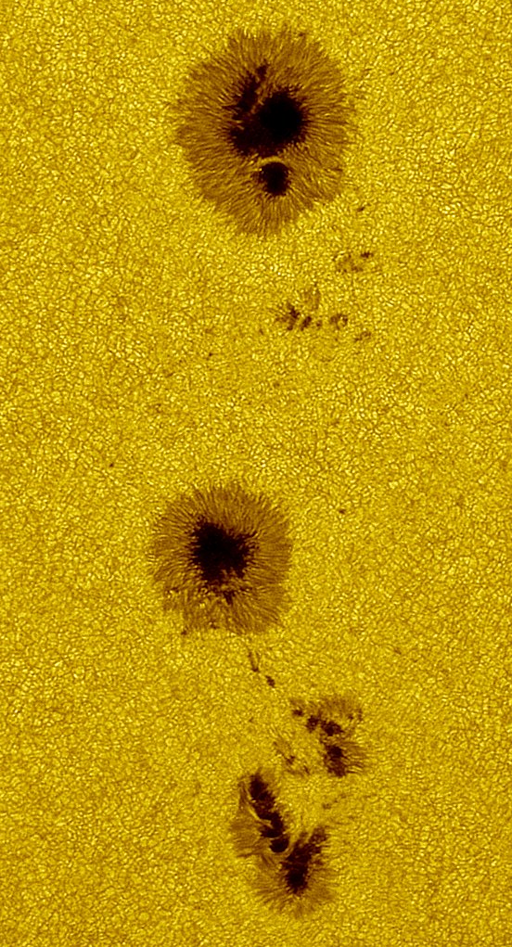From Space Weather.com
AURORA WATCH: A solar wind stream is expected to hit Earth late on July 19th, and this could spark G1-class geomagnetic storms around the poles. High-latitude sky watchers should be alert for auroras, especially in the southern hemisphere where dark winter skies favour visibility of faint lights. [aurora gallery]
BIG SUNSPOTS: Solar activity has been low for months. This could soon change. Two big sunspot groups are directly facing Earth, and one of them has an unstable magnetic field that poses a threat for M-class solar flares. Bill Hrudey photographed the active regions on July 16th from Cayman islands:
“Sunspots AR2567 & AR2565 are great imaging targets surrounded by many granules,” says Hrudey.
What are granules? The sun is so hot, it literally boils. Granules are bumps on the boiling surface, much like the bumpy surface of water boiling on a hot stove. One difference: While the granules on your stove are only a few centimeters across, granules on the sun are as wide as Texas.
As if granules weren’t big enough, the primary dark cores of these sunspots are twice as wide as the entire Earth. Great targets indeed. If you have a solar telescope, take a look.

